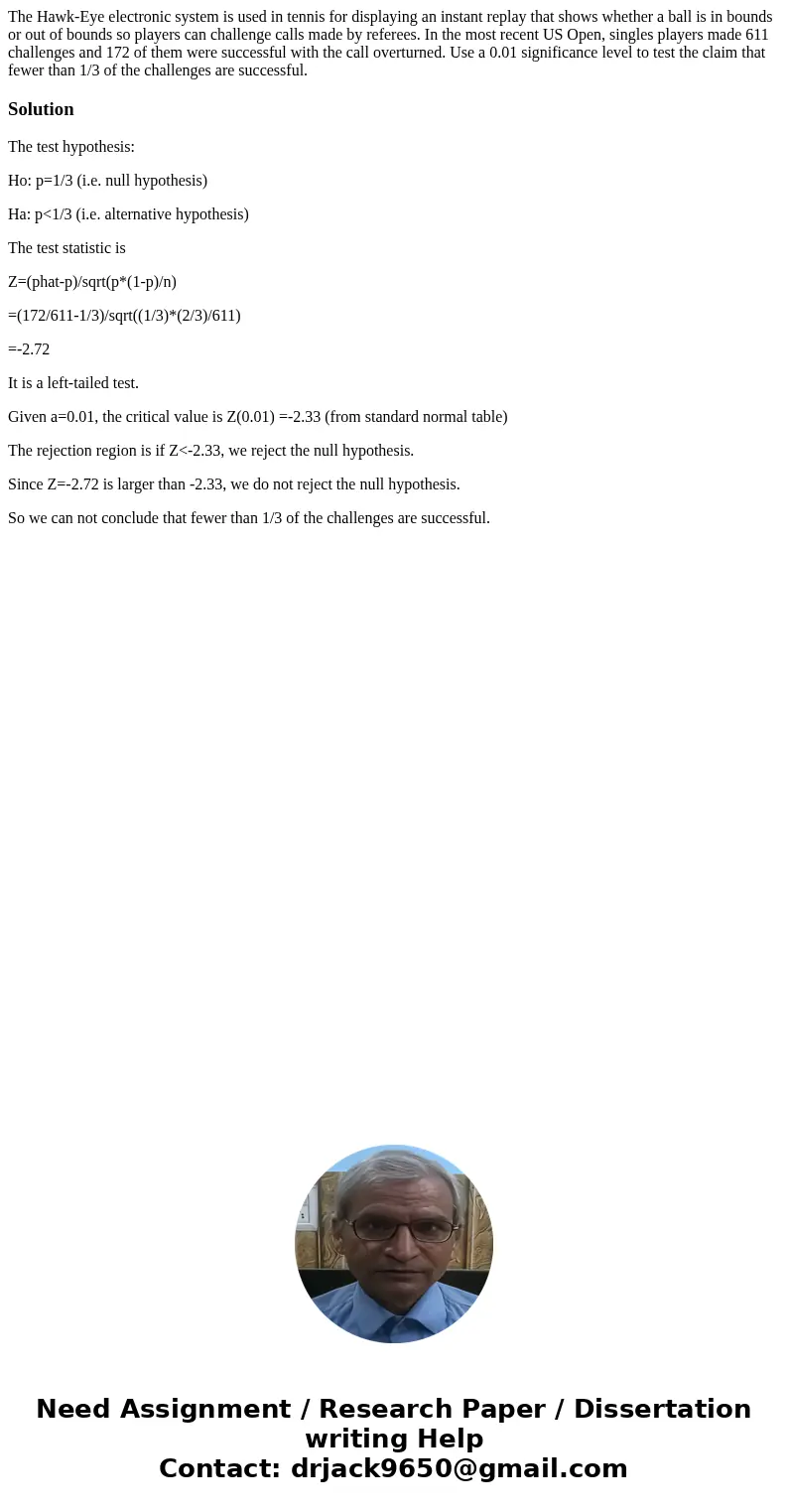The HawkEye electronic system is used in tennis for displayi
The Hawk-Eye electronic system is used in tennis for displaying an instant replay that shows whether a ball is in bounds or out of bounds so players can challenge calls made by referees. In the most recent US Open, singles players made 611 challenges and 172 of them were successful with the call overturned. Use a 0.01 significance level to test the claim that fewer than 1/3 of the challenges are successful.
Solution
The test hypothesis:
Ho: p=1/3 (i.e. null hypothesis)
Ha: p<1/3 (i.e. alternative hypothesis)
The test statistic is
Z=(phat-p)/sqrt(p*(1-p)/n)
=(172/611-1/3)/sqrt((1/3)*(2/3)/611)
=-2.72
It is a left-tailed test.
Given a=0.01, the critical value is Z(0.01) =-2.33 (from standard normal table)
The rejection region is if Z<-2.33, we reject the null hypothesis.
Since Z=-2.72 is larger than -2.33, we do not reject the null hypothesis.
So we can not conclude that fewer than 1/3 of the challenges are successful.

 Homework Sourse
Homework Sourse